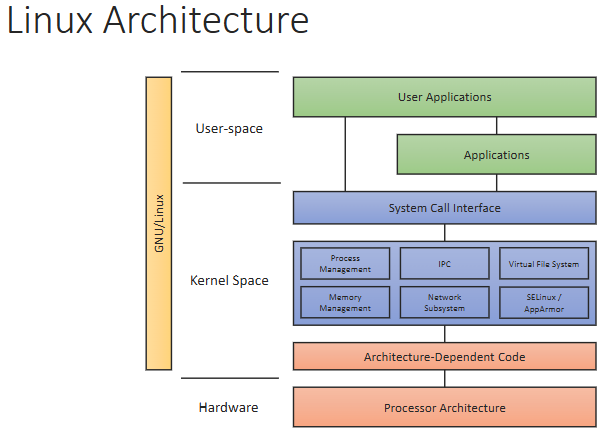Unix and Linux
Authentication
- Lets us verify who we are to a system
- Need a mechanism to enforce access control
- Subject/Principal - an active entity
- Object - resource being accessed
- Access operation
- Reference Monitor - grants or denies access
Principals vs. Subjects
Principal
An entity that can be granted access to objects or can make statements affecting access control decisions
- User identity in an OS
- Used when discussing security policies Subject An active entity within an IT system
- Process running under a user identitity
- Used when discussing operational systems and enforcing policies
Objects
Files or resources - Memory, printers, directories Two options for focusing control:
- What a subject is allowed to do
- What may be done to an object Unix
- In Unix, everything is a file
- Files really represent resources
- Organised in a tree structure, with alterations depending on the file system
- Indoes store permissions information
- Every resource has an owner and group
General Model
Read - Simply viewing (confidentiality)
Write - Includes changing, appending, deleting (Integrity)
Execute - Can run a file without knowing its contents
Ownership
Discretionary - Owner can be defined for each resource. Owner controls who gets access Mandatory - There could be a system-wide policy. Most OS support the concept of ownership
Unix
- Simplifies access control by considering only the owner, group and others
- User is the current owner
- Group is a named group entity
- Everyone else
- Unix offers
Read,WriteandExecuteaccess controls
Groups
- Users with similar access rights can be collected into groups
- Groups are given permissions to access objects

UID/GID
- Username in Unix/Linux are soft aliases, your UID is what determines permissions
- Stored in
/etc/passwd- Stores accounts, not just passwords

- Root has a special UID: 0
Shadow File
- Store password hashes in a shadow file, only readable by root users
- Stores the hashed passwords needed to authenticate users
All things Root
- Most powerful user
- UID is 0, actually hardcoded into the linux kernel at multiple points
- Write protect
/etc/passwdand/etc/group - Separate superuser duties
- Never use root as a normal user
- Audit
suandsudousage
Inodes
- Store the metadata for files
- Each file name links to an inode, which stores security information
Permissions
- Every resource has permission bits - held in the inode metadata
- Permissions for the user/group/others
Octal
Octal representation (bit-wise, really)
- Bit 3: read (0x4, octal/decimal)
- Bit 2: write (0x2, octal/decimal)
- Bit 1: execute (0x1, octal/decimal)
- Permissions are changed using
chmod, usually by passing three octal values
Directories
Directory permissions are slightly different to files:
r- List files within the directoryw- add or remove filesx- traverse directory, open files in the directory
SUID
- Set UID: set the effective user to be the file owner when executed
- Necessary to allow non-privileged access to privileged actions e.g. password
- Dangerous
Linux Security Modules
- Since 2.6, Linux provides the ability to hook into security calls
- Adds the ability to perform more complex Mandatory Access Control after standard Unix DAC
- DAC check happens irrespective of whether SM is operational
SELinux
- Began as a collaboration between the NSA and Redhat - now entirely redhad
- Allows mandatory (centralised) access control, role-based and multi-level security
- Objects are processes have contexts that allow SELinux to make access control decisions
- Defines its own users, which are mapped to the Linux users
- Many users and user process map to
unconfined_u- This means SELinux doesnt apply to them by default
- But it can, you just need a committed administrator
AppArmor
- Installed as standard
- Usually used to enforce policies on services and daemons